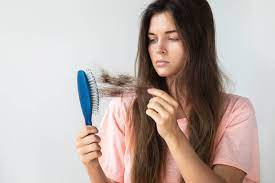Thinning hair can be a common concern, impacting individuals of various ages and genders. While addressing the underlying causes of thinning hair is crucial, caring for the existing hair is equally important to prevent breakage and maintain overall hair health. In this article, we will explore best practices for thinning hair care, focusing on preventing breakage and promoting the resilience of the existing strands.
Understanding Thinning Hair and Breakage:
Thinning hair often results from factors such as genetics, hormonal changes, nutritional deficiencies, stress, and aging. As hair follicles produce thinner and weaker strands, the hair becomes more prone to breakage. Breakage can occur at any point along the hair shaft, leading to noticeable thinning, loss of volume, and diminished hair density.
Best Practices for Thinning Hair Care:
- Gentle Washing and Conditioning: Use a mild, sulfate-free shampoo and conditioner specifically designed for thinning hair. Washing your hair too frequently or using harsh products can strip away natural oils, leading to dryness and breakage. Be gentle when washing and conditioning, avoiding aggressive rubbing or pulling.
- Avoid Hot Water: Wash your hair with lukewarm or cool water rather than hot water. Hot water can strip the hair of its natural oils, leaving it dry and more susceptible to breakage. Cooler water helps maintain the hair’s moisture balance and contributes to overall hair health.
- Pat Dry, Don’t Rub: After washing your hair, pat it dry with a soft towel instead of rubbing vigorously. Wet hair is more prone to breakage, and rubbing with a rough towel can further weaken the strands. Gently press the towel against your hair to absorb excess water.
- Use a Wide-Tooth Comb: Detangle your hair with a wide-tooth comb, starting from the tips and working your way up to the roots. This helps minimize breakage and prevents unnecessary stress on the hair. Avoid brushing wet hair, as it is more fragile and prone to breakage.
- Choose the Right Hairbrush: When brushing your hair, opt for a brush with soft, flexible bristles. Brushes with widely spaced bristles are gentler on thinning hair and help prevent breakage. Avoid using brushes with hard, rigid bristles, as they can cause damage to the hair shaft.
- Protect Your Hair While Sleeping: Use a silk or satin pillowcase to reduce friction and prevent breakage while sleeping. Alternatively, tie your hair in a loose ponytail or bun to minimize rubbing against the pillow. This protects the hair cuticle and reduces the risk of breakage.
- Limit Heat Styling: Excessive heat styling can contribute to hair breakage. When using these tools, apply a heat protectant spray to minimize damage. Opt for heat-free styling methods whenever possible.
- Deep Conditioning Treatments: Treat your hair to deep conditioning treatments regularly to keep it moisturized and resilient. Look for products containing ingredients like keratin, biotin, and argan oil, which can strengthen the hair and prevent breakage.
- Protect Your Hair from the Sun: UV rays from the sun can damage the hair cuticle, leading to increased breakage. Protect your hair from the sun by wearing a hat or using a UV-protective hair spray. This is especially important for individuals with thinning hair, as the hair may be more vulnerable to sun damage.
- Trim Regularly: Regular trims help prevent split ends and breakage. While trimming won’t make your hair grow faster, it promotes healthier-looking hair by removing damaged ends. Schedule regular appointments with a hairstylist to keep your hair in optimal condition.
- Avoid Tight Hairstyles: Tight hairstyles, such as tight ponytails, braids, or buns, can exert stress on the hair shaft and lead to breakage. Opt for looser hairstyles that minimize tension on the hair. If you prefer tying your hair back, use soft, fabric-covered hair ties.
- Balanced Nutrition: Maintain a balanced diet rich in essential nutrients for hair health. Protein, vitamins, and minerals, such as biotin, vitamin E, and iron, are crucial for the strength and resilience of the hair. Consider consulting with a healthcare professional or a trichologist to address nutritional deficiencies.
- Manage Stress: Chronic stress can contribute to hair loss and breakage. Practice stress-management techniques such as meditation, yoga, or deep breathing exercises to promote overall well-being and support healthy hair.
- Consider Professional Treatments: Explore professional treatments for thinning hair, such as scalp massages, laser therapy, or platelet-rich plasma (PRP) therapy. These treatments can enhance the health of the scalp and hair follicles, promoting a more robust environment for existing hair.
- Consult with a Trichologist: If you are experiencing significant thinning or hair loss, consider consulting with a trichologist—a specialized healthcare professional who focuses on hair and scalp health. A trichologist can assess the underlying causes of your hair concerns and provide personalized recommendations for care.
Conclusion:
Preventing breakage is a crucial aspect of caring for thinning hair and maintaining its overall health and appearance. By incorporating gentle washing practices, avoiding excessive heat styling, protecting hair during sleep, and adopting a balanced approach to nutrition, individuals can promote the resilience of existing strands. Additionally, consulting with a trichologist or healthcare professional can provide personalized insights and recommendations for addressing specific concerns related to thinning hair. With these best practices, individuals can nurture their hair and embrace a more confident and healthier-looking mane.
On the hunt for the top hair doctor in Vadodara? Your quest ends here! Experience unmatched hair care excellence and transform your locks with the best in the city.


